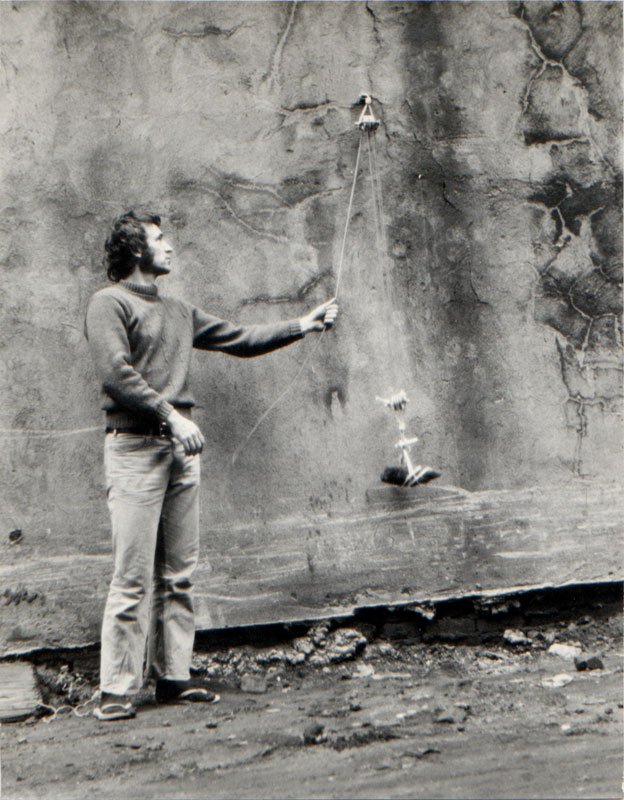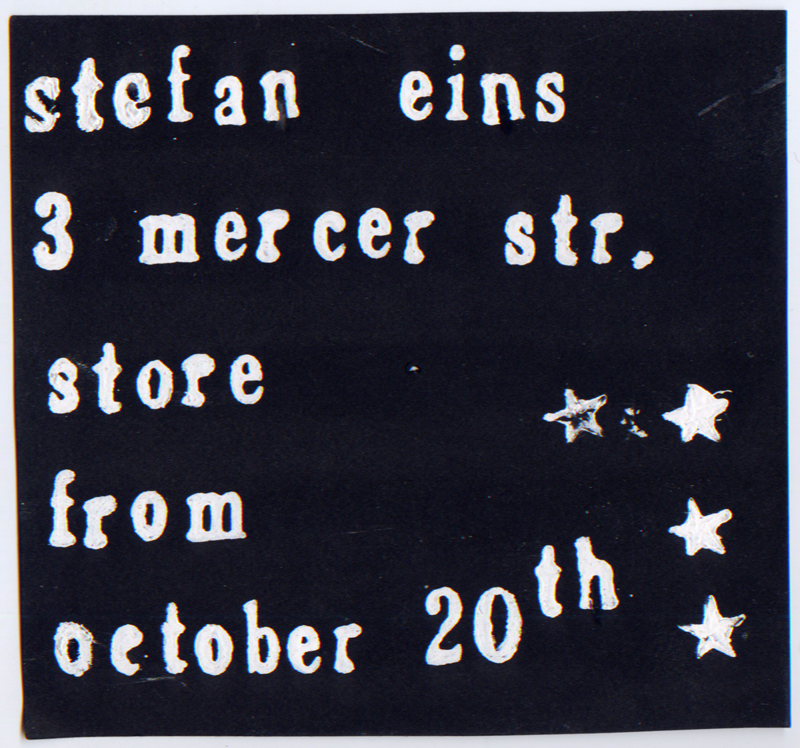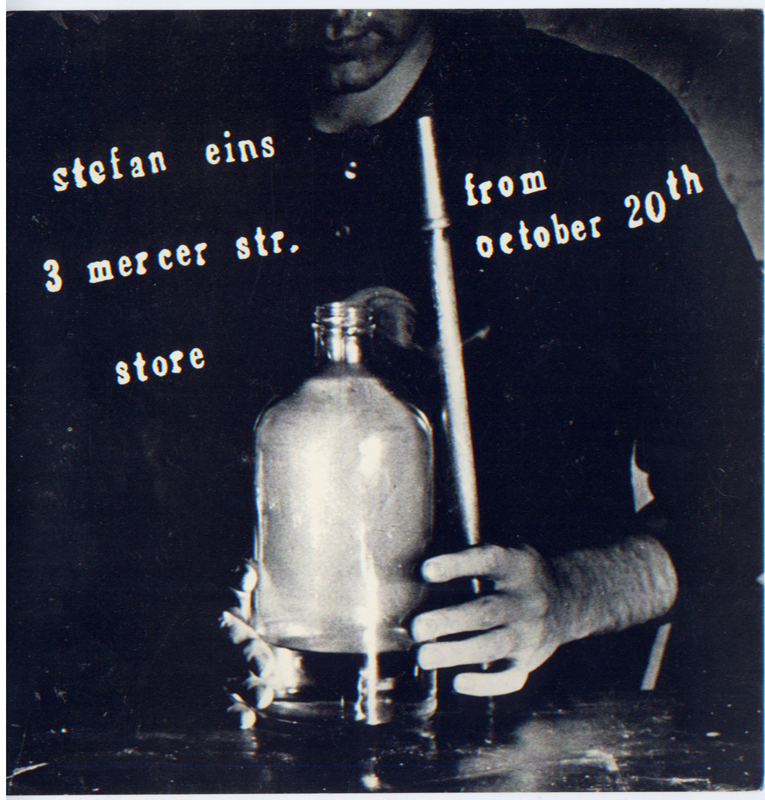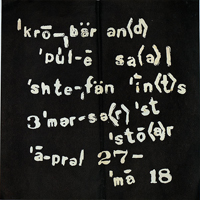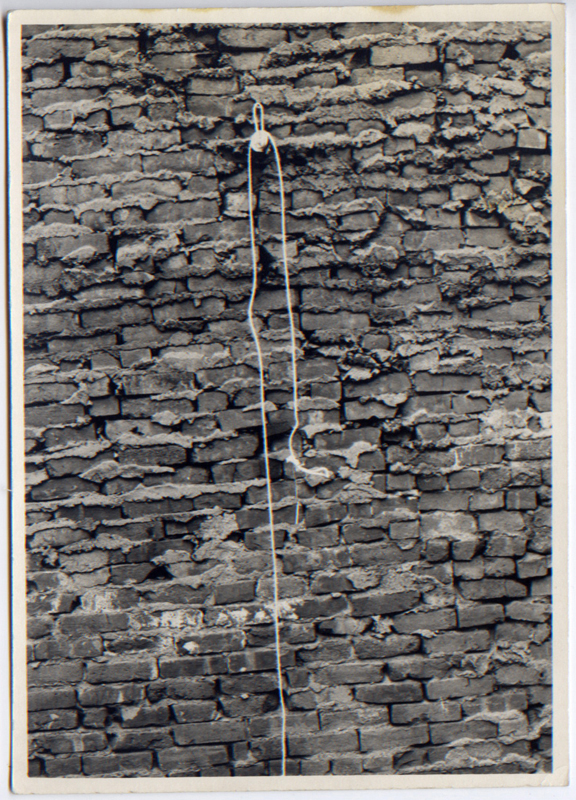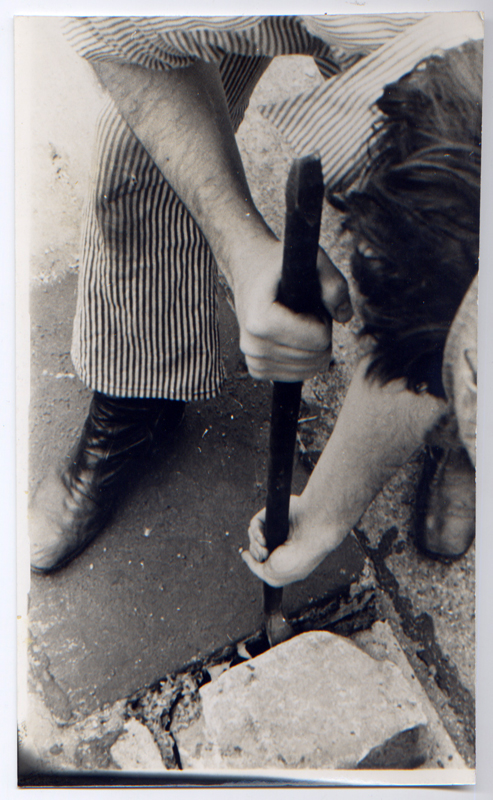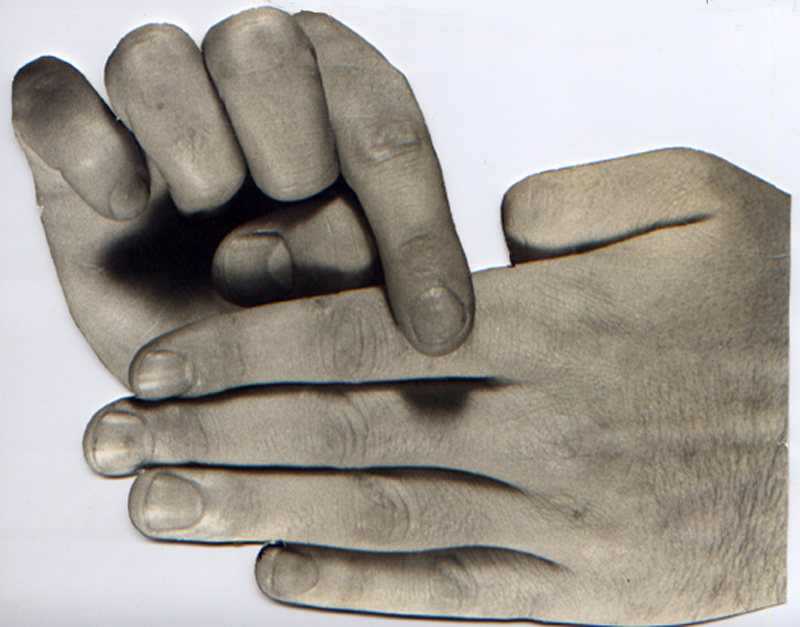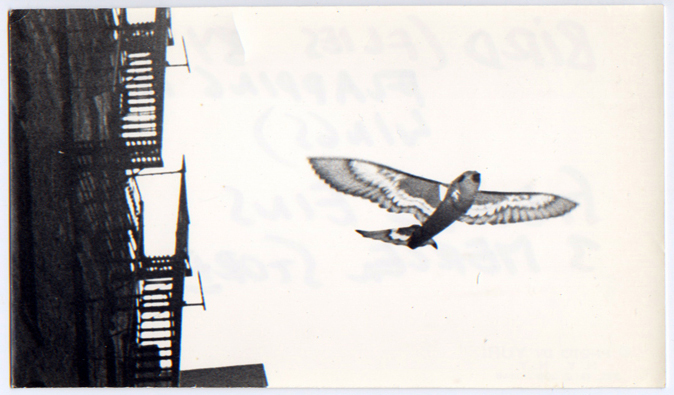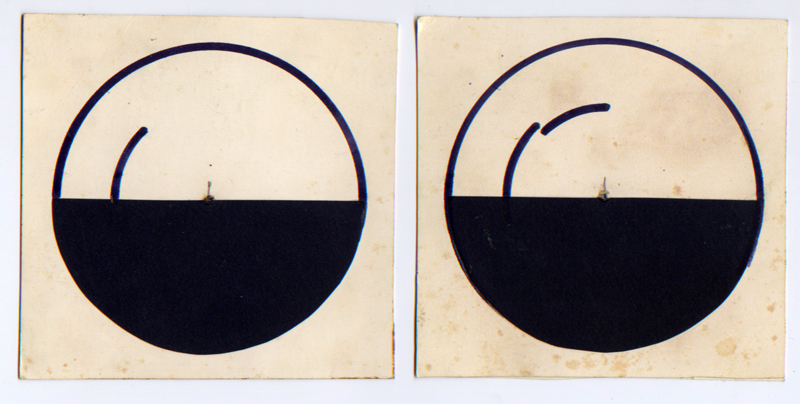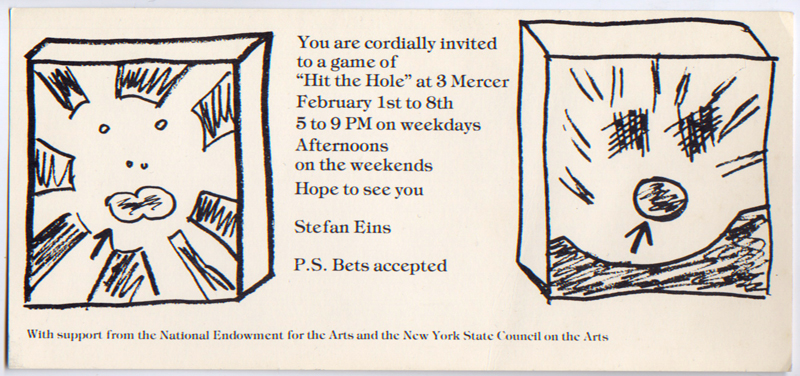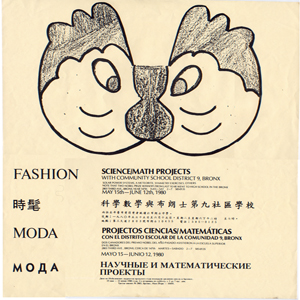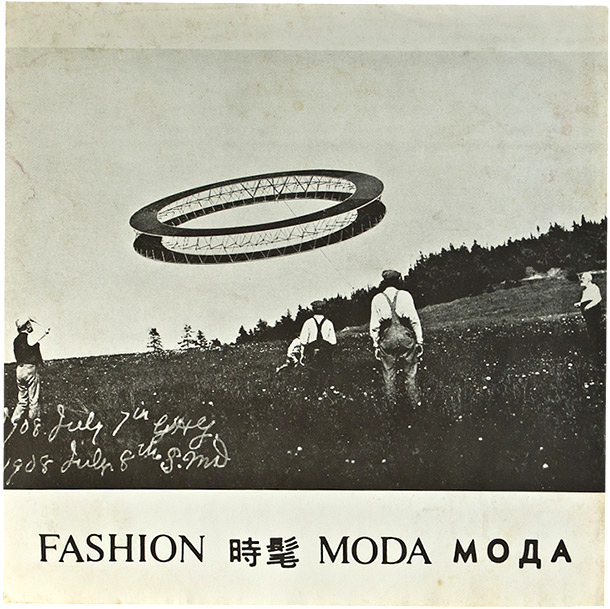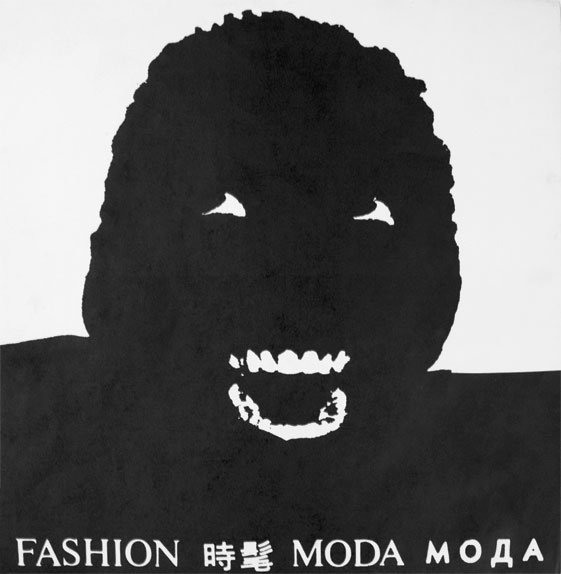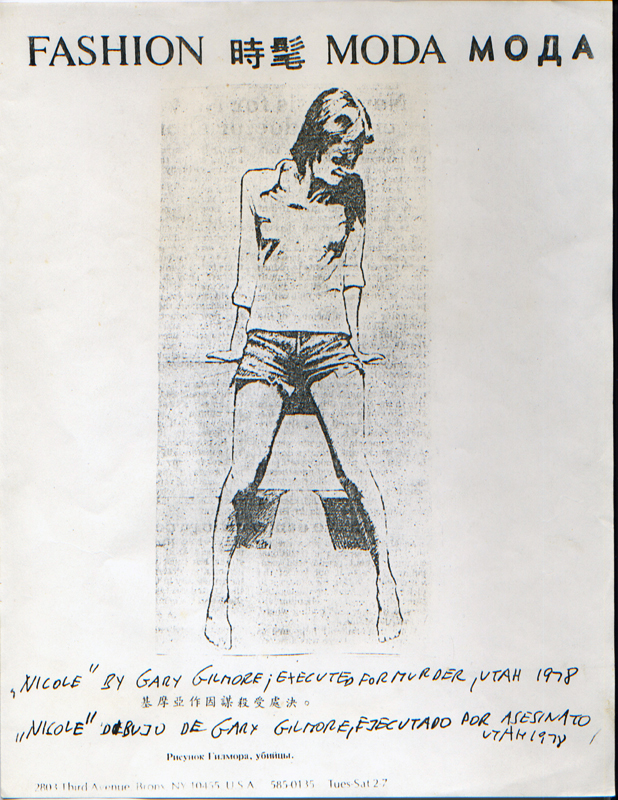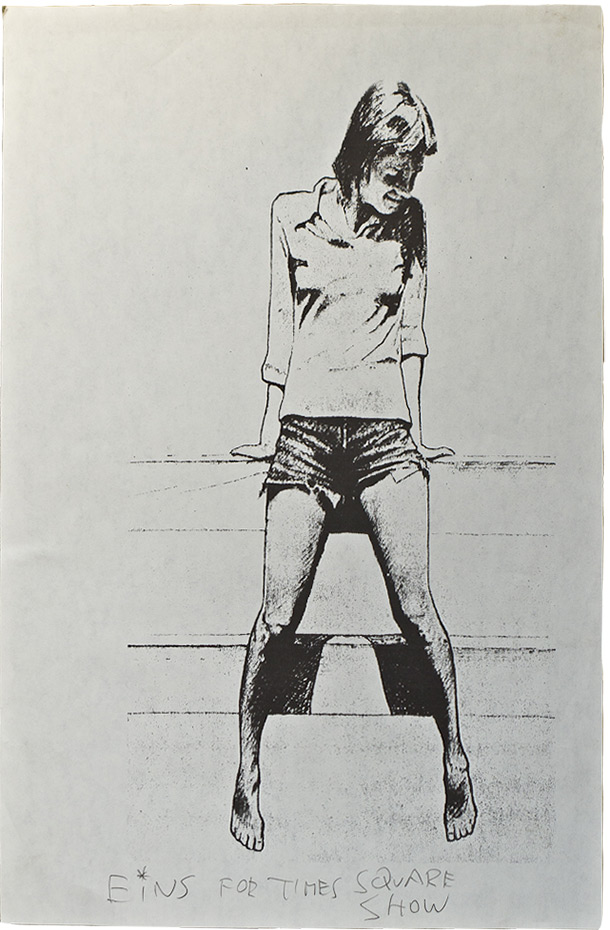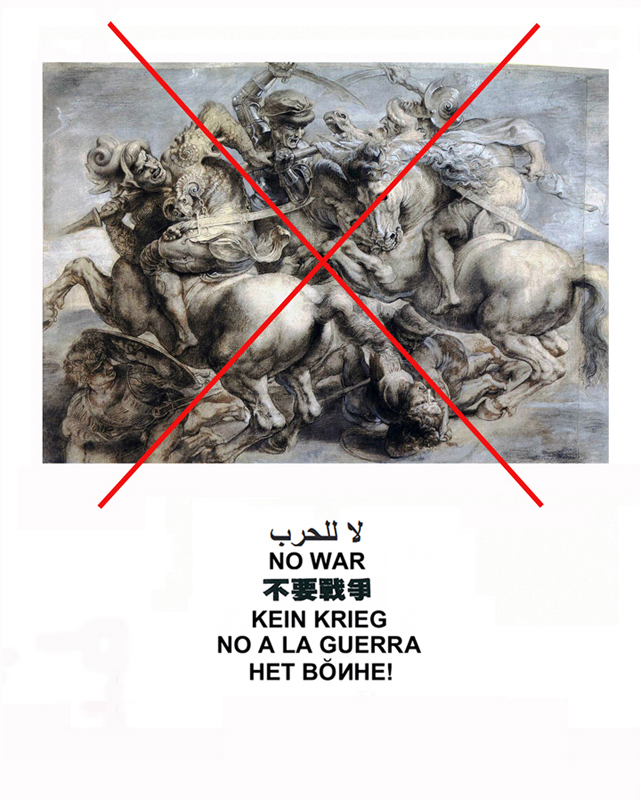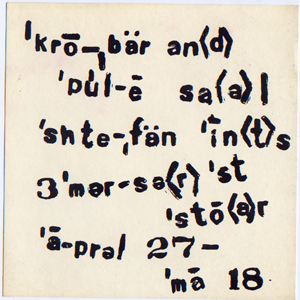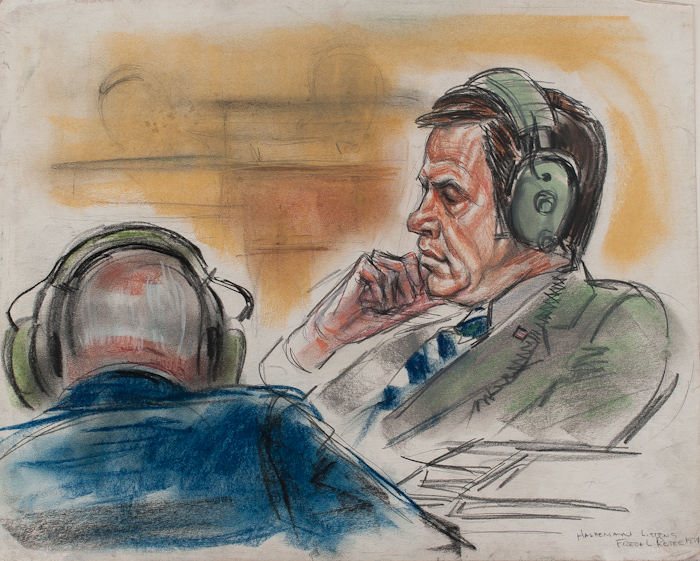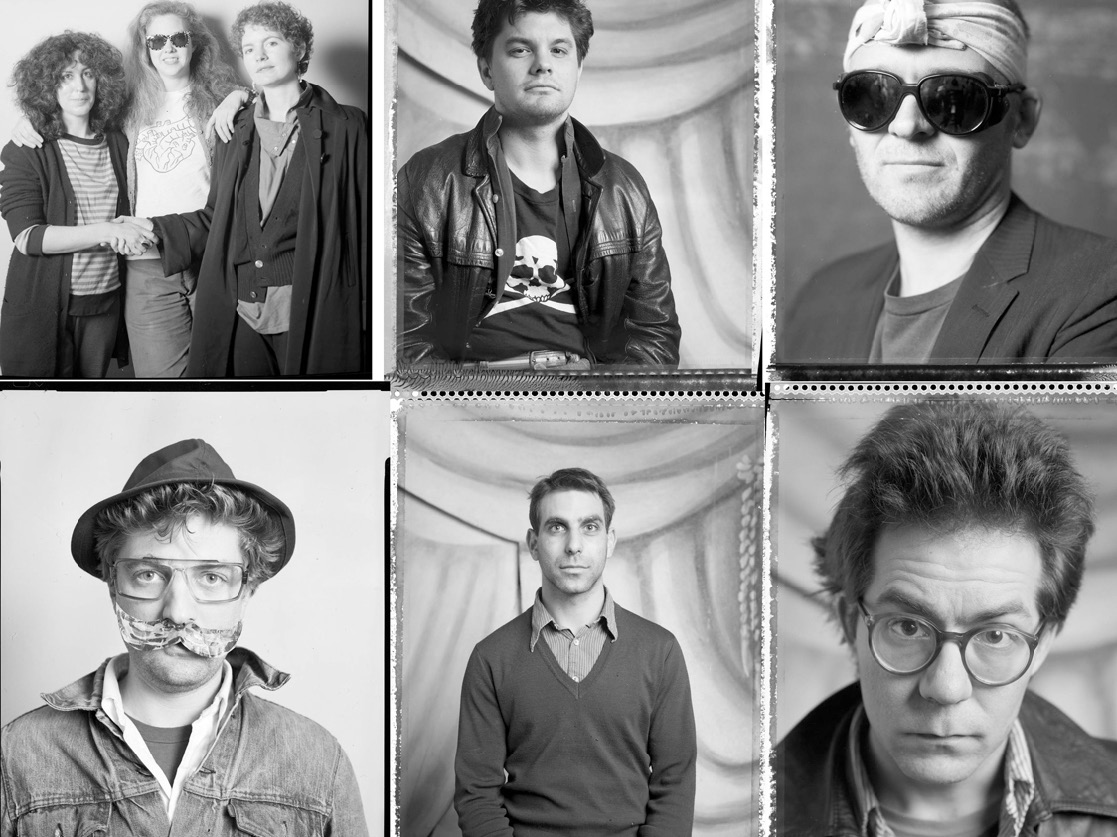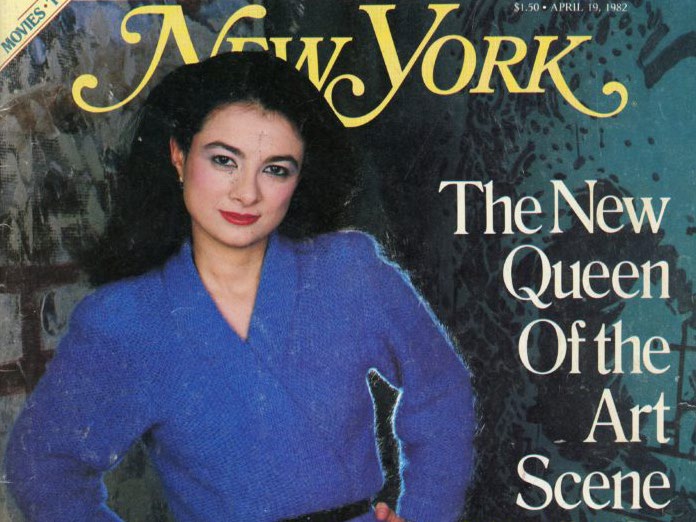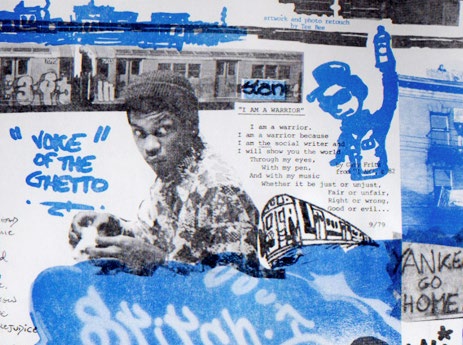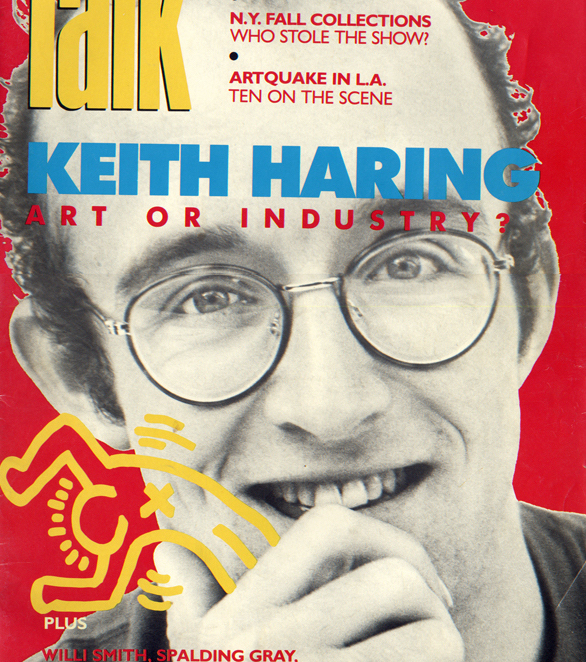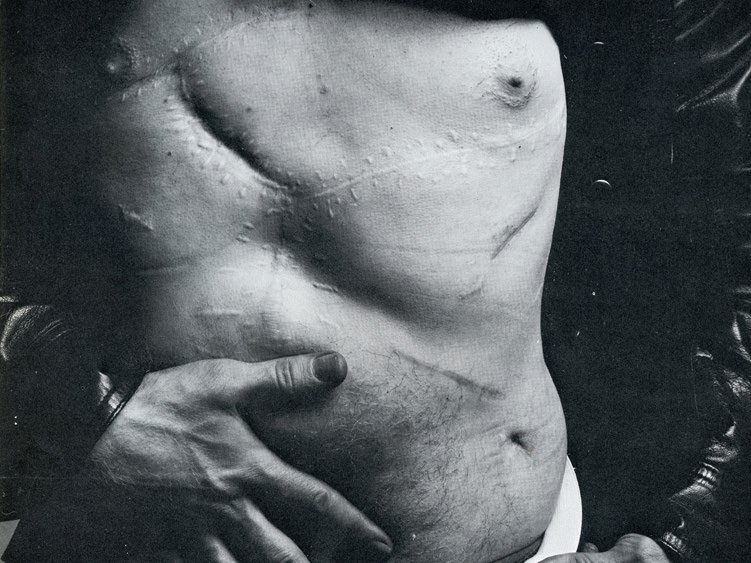Stefan Eins: the Enigma Behind 3 Mercer Street and Fashion Moda, 1970–80
By Marc H. Miller
As the founder of two idiosyncratic, do-it-yourself art spaces and as an early member of the artist group Collaborative Project, Inc. (COLAB), Stefan Eins played a central role in shaking up the insular, overly-intellectualized art world of the 1970s in favor of a more socially-engaged, multi-cultural art with broader public appeal. Eins’ storefront at 3 Mercer Street (1972–79) pointedly called itself a store not a gallery, and encouraged artists to show low-priced art. Fashion Moda (1978–93) was more radical. Located in a dilapidated section of the South Bronx far removed from the traditional venues of fine art, this unlikely art space virtually forced downtown artists to move in populist directions and provided an opening for graffiti artists and others outside the mainstream to become part of the mix. As an art impresario, Eins has a secure place in the story of art in the 1970s and 1980s. Much less known, however is Eins’ own art. This online exhibition looks at the work he made in the 1970s and shows its connection to the art spaces he was then creating.
Arriving in New York from Vienna in 1967, Eins joined a dynamic downtown art scene alive with change. In Austria Eins studied sculpture; in New York he worked freely in all media continually expanding his ideas in conformity with his belief that art was a universal impulse rooted in the souls of all people. The logo he designed for Fashion Moda expressed that philosophy incorporating four major languages—English, Spanish, Chinese and Russian. Eins wants his art to embrace the mysteries in life and sees art as indistinguishable from magic, religion and science. His creative strategies include appropriation and encourage viewer interaction. Typical is his show of pulleys and crowbars where visitors at 3 Mercer Street were encouraged to handle everyday tools that demonstrate the simple mechanical wonder of lifting heavy objects with minimum effort.
Because he was always occupied running art spaces during the 1970s, much of Eins’ creativity was directed to graphic design for posters and signage. He favored a simplicity of means: appropriated images, a typewriter or press type for text, and explored the possibilities of enlargement and the positive/negative reversals inherent to photostats and Xerox. In Eins’ graphics there is room for chance and continual variation.
COLLECTION HIGHLIGHTS:
- Examples of Eins’ graphic works done at 3 Mercer Street include posters and one-of-a-kind design samples.
- A selection of “art products” by Eins, design sketches, prototypes, and documentary photographs including The Crowbar, The Cyclops, Rotating Disks, and UFO Posters.
- Eins’ appropriation of death-row inmate Gary Gilmore’s drawing of girlfriend Nicole seen in two variations: a Xeroxed Fashion Moda flyer, and a signed, enlarged Xerox from the same group of photocopies that Eins included in the Times Square Show (1980).
